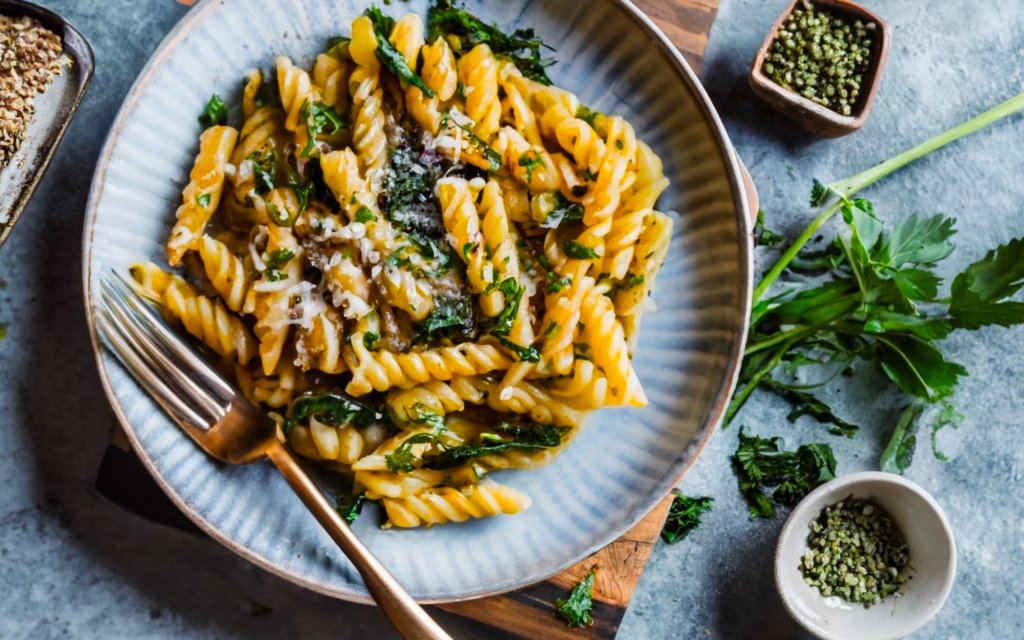Learn How to Make Kombucha With Garden Herbs
Kombucha is a fermented tea drink that has been around for thousands of years. It offers a range of potential health benefits, from gut health to immunity and more. Many kombucha lovers enjoy experimenting with different flavors by infusing fruit, spices, and herbs into their brews. Using fresh herbs from your garden is a great way to add unique flavor profiles and nutrients to homemade kombucha.
In this beginner’s guide, we will cover everything you need to know about making delicious kombucha using garden herbs. We’ll look at the benefits of kombucha, how to choose herbs that complement the fermentation process, brewing methods, second fermentation, and troubleshooting tips. Let’s get started!
Key Points:
- Brief history of kombucha – Kombucha originated in East Asia over 2,000 years ago and has recently surged in popularity in the West as well.
- Basic fermentation process – Kombucha is made by fermenting sweetened tea using a symbiotic culture of bacteria and yeast called a SCOBY.
- Variations in recipes – While basic ingredients are tea, sugar, and SCOBY, there are many recipe variations when it comes to types of tea, sugars, and flavorings used.
- Rise of homebrewing – Many people enjoy the creativity and customization of brewing their own kombucha at home.
- Using local, seasonal ingredients – Tailoring kombucha recipes based on available garden herbs and foods makes each batch unique.
What is Kombucha?
Kombucha is made by fermenting sweetened tea with a symbiotic culture of bacteria and yeast, known as a SCOBY. The SCOBY metabolizes the sugar into acids, carbon dioxide, and trace amounts of vitamins and enzymes. This gives kombucha its characteristic tangy, effervescent taste.
The fermentation process allows beneficial probiotics and organic acids to develop which can support digestion and immunity. Kombucha has antioxidant properties and contains a small amount of B-vitamins, vitamin C, amino acids, and glucuronic acid.
Benefits of Kombucha
Drinking kombucha regularly may provide the following benefits:
- Supports gut health and digestion with probiotics
- Boosts immunity with antioxidant and vitamin content
- Detoxifies the liver and body with glucuronic acid
- Hydrates with its high water content
- May help manage blood sugar levels
- Improves mental clarity and mood
The herbal ingredients used can also introduce additional vitamins, minerals and phytonutrients. Pairing kombucha with fresh garden herbs capitalizes on their combined nutritional benefits.
What are Herbal Kombucha Flavors?
Almost any edible culinary herb can be used to flavor kombucha for a unique taste experience. Some of the most popular choices include:
- Mint – Spearmint and peppermint add refreshing flavor.
- Lemon balm – Adds bright citrus and herb notes.
- Basil – Brings a sweet, aromatic flavor.
- Lavender – Contributes mild floral essence.
- Chamomile – Provides soothing apple-like taste.
Medicinal herbs like ginger, turmeric and elderberry are also excellent options. We’ll cover the best herbs for kombucha next.
Benefits of Using Garden Herbs in Kombucha
Infusing your kombucha with garden herbs offers several advantages:
- Unique flavor combinations – endless creativity!
- Additional nutrients and health benefits from the herbs
- Makes use of your homegrown herbs
- Herbs contain enzymes that may aid fermentation
- Lower cost than store-bought juices and flavorings
Choosing Herbs for Kombucha
When selecting fresh herbs from your garden to flavor kombucha, you’ll want to keep a few key considerations in mind.
Tips for Choosing Herbs
- Culinary vs. medicinal – Culinary herbs like basil, sage, and thyme are safer bets. Some medicinal herbs like goldenseal may inhibit fermentation.
- Flavor intensity – Subtle herbs like chamomile and lavender won’t get overpowered. Avoid strong spices like chili.
- Antimicrobial properties – Herbs like oregano and thyme have natural antiseptics that could slow fermentation. Use sparingly.
- Safe for consumption – Make sure the herbs you use are non-toxic varieties intended for human consumption.
- Personal taste preferences – Pick herbs you enjoy the flavor of. Popular choices include mint, lemon balm, ginger, and turmeric.
- Seasonal availability – Use what you have abundant access to in your garden for any given season.
Preparing Herbs for Kombucha
Once you’ve chosen your herbs, proper preparation is key. Here are some tips:
- Wash thoroughly – Clean herbs from dirt and debris. Gently rub or rinse leaves.
- Remove leaves – For woody herbs like rosemary, remove leaves from stems before using.
- Cut, tear, or mince – Breaking down herbs releases more flavor. Mint and lemon balm can be gently torn. Mince tougher leaves like sage.
- Use within a day – Prepared herbs will lose potency if stored too long before brewing.
- Optimal quantity – For a 1 gallon batch, use around 1 cup loosely packed fresh herb leaves. Adjust to taste.
Now let’s get into the specifics of brewing kombucha itself and when to add the herbs.
Brewing Kombucha with Herbs
Kombucha brewing is a simple process, although it does require precision. Follow these key steps for perfect sweet tea and successful fermentation every time.
Brewing the Sweet Tea
- Bring 1 gallon filtered water to a boil.
- Remove from heat and stir in 1 cup organic cane sugar until fully dissolved.
- Add 5 to 8 bags black or green tea. Steep 20 minutes then remove tea bags.
- Let sweet tea fully cool to room temperature before proceeding.
First Ferment with SCOBY
- Pour room temperature sweet tea into a 1 gallon glass jar.
- Add your prepared herbs and stir to fully incorporate. Good options for first ferment include minced ginger, turmeric, lemongrass or fresh tea herbs like hibiscus.
- Add the SCOBY and 1 to 2 cups starter liquid from a previous batch.
- Cover jar with breathable cloth and secure with rubber band. Allow 1 inch headspace.
- Ferment at room temperature out of direct sunlight for 7-10 days. Taste frequently once acidic flavor develops.
The first fermentation period allows the yeast and bacteria to convert the tea’s sugars into carbon dioxide, organic acids, and trace nutrients. Adding culinary herbs at this stage provides flavor and nutrition early on.
Second Fermentation with Herbs
After the initial 7-10 day first ferment, you can flavor the kombucha further through a second fermentation by adding herbs and fruit.
Tips for Second Ferment
- Use a quart-sized glass jar fitted with an airlock or flip-top bottles. This allows gases to escape.
- Add 1 to 2 cups chopped herbs like mint, basil, lavender or rosemary per 16 oz bottle.
- You can also add sliced fruit, fruit juice, spices, or flavored tea.
- Leave 1-2 inches headspace for expansion.
- Ferment for 2-7 days at room temperature out of direct sunlight.
The second ferment carbonates the kombucha to desired fizziness from the ongoing yeast activity. Herbs, fruit, and spices add flavor dimension.
Bottling and Carbonating
When your kombucha reaches the perfect balance of sweetness and acidity for your tastes, it’s ready for bottling.
- For fizzier kombucha, do a second ferment as described above.
- Use flip-top glass bottles fitted with an airlock if carbonating. Plastic bottles may explode from pressure.
Leave 1 inch headspace.
- Bottle flavor-infused kombucha from the second ferment.
- Store in the fridge to slow fermentation. Consume within 1-2 months.
- To serve, pour over ice or dilute with soda water if very vinegary.
Troubleshooting Herbal Kombucha
Making kombucha with herbs is generally safe, but issues can arise on occasion:
- Mold – Throw out the batch. Sterilize all equipment. Start fresh with new starter liquid.
- Vinegar flavor – Fermented too long. Start new batch with weaker starter tea.
- Too sweet – Ferment longer or add starter liquid with lower pH.
- Flat kombucha – Do a second ferment with flavors to produce carbonation.
- No bubbles in bottles – Use airlock bottles for second ferment. Add tad more sugar.
Proper sanitation and fermentation conditions will minimize problems. Share your herbal kombucha creations in the comments!
Conclusion
Kombucha made with fresh herbs from your garden provides a fun DIY beverage with tasty flavor combinations and health advantages.
Herbs introduce additional nutrients, enzymes, and phytonutrients that complement the vitamins, probiotics, and organic acids created through the fermentation process.
Follow the key steps outlined above to brew the sweet tea, ferment with your SCOBY, infuse herbs and flavors during the first and second ferments, and bottle the finished kombucha.
With proper technique and sanitary conditions, you can produce successful batches of fizzy probiotic kombucha flavored with your favorite harvest of garden herbs. Get creative and enjoy concocting your own custom herbal kombucha creations!
FAQ
What herbs work best for kombucha?
Some of the best herbs are mint, lemon balm, ginger, turmeric, hibiscus, lavender, and basil. Avoid medicinal herbs.
When do you add the herbs?
Add culinary herbs during the first ferment for flavor and nutrition. Add herbs, fruits, and spices during the second ferment for more flavor and carbonation.
How much herbs should you use?
For a 1 gallon batch, use around 1 cup loosely packed fresh herb leaves total. Split between the first and second ferment.
How long does herbal kombucha take?
Brew sweet tea, then do a first ferment for 7-10 days. Taste frequently once acidic. Do a 2-7 day second ferment for carbonation.
What’s the best way to infuse herbs?
Wash and mince herbs. Add to the sweet tea or bottle for second ferment. Let flavors infuse into the kombucha over the fermentation period.





